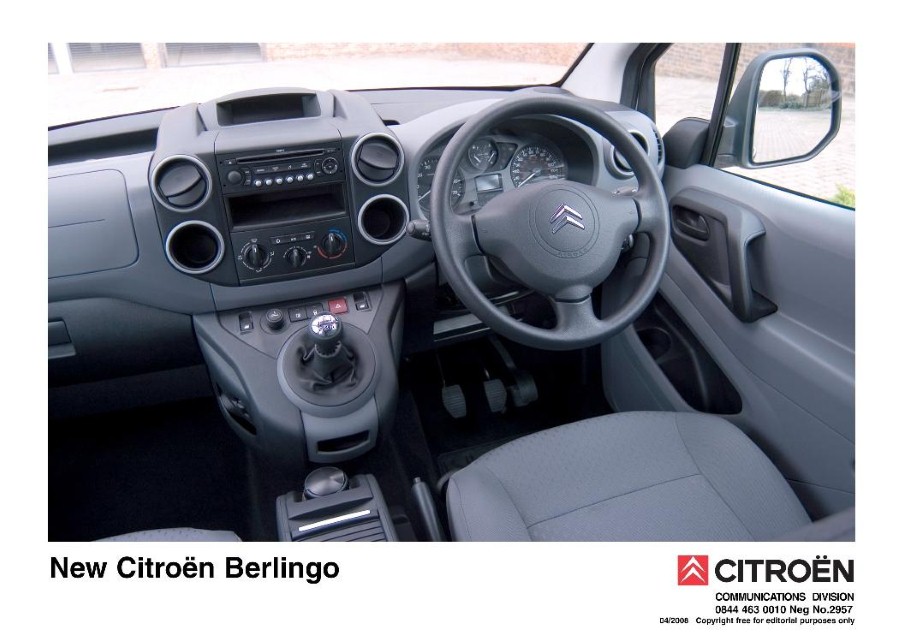Here are a few tips to help you find the right van.
If you work in a trade, whether for a company or on a self-employed basis, it's likely that you have a lot of tools that you need with you everyday. Getting yourself and your equipment from point A to be point B with the least amount of hassle is essential, so it's important that you invest in the right van.
Buying something that is too small means cramming everything in, which could lead to damage, and purchasing something that is too big could see running costs get out of hand. You want to ensure that the vehicle you end up with is fit for purpose, rather than being ill-suited to the job.
Here are a few tips to help you find the right van.
Before you buy
Firstly, you need to decide whether or not you want to buy something outright or hire it through a leasing agreement – such contracts tend to last between 24 and 60 months and monthly payments can be dependent on how many miles you will do per year.
If you're a business looking to invest in more than one van, it might be a good idea to have a look at the good quality second-hand vehicles on offer, as buying brand new models may be unnecessary.
Different categories
As you are probably already aware, vans come in all shapes and sizes, so there will be something on the market that fits your needs and budget.
Vans and light commercial vehicles are split into the following four categories:
- Microvans – these are small and compact, such as the Mitsubishi Minicab.
- Car-derived vans – based on the chassis of a normal car, these can come in various shapes or sizes. Examples include the Vauxhall Astravan and the Citroen Berlingo.
- Pick-ups – these are larger than a regular 4×4 and come with a small double or single cabin, an open body and open sides, such as the Mitsubishi L200.
- Panel vans – ranging in size, these are the largest type of van, with the ubiquitous Ford Transit being the most common.
Size
You must consider what size van you'll need, as getting something too big or too small can lead to problems further down the line.
If your job requires you to navigate up and down tight streets or customers' driveways, then you'll need something that's a bit nippy and has great manoeuvrability. Conversely, if you're hauling a lot of tools or equipment across the country, then a small van would be impractical. Smaller vehicles can offer superior fuel economy to their larger counterparts, but bigger vans are easier to maintain.
Buying your van
After you've done your research and decided what type of vehicle you're in the market for, you'll be ready to invest in your van.
There are several magazines and websites that can offer you detailed comparisons of various makes and models, and some will even provide you with guide prices for both new and second-hand vans to give you an idea of what you can expect to pay, so this is a good place to start.
Budget
The most important thing to keep in mind when heading to a garage or dealership is to remember what your budget is and stick to it. Salespeople can employ incredibly persuasive tactics to lure you away from what you can realistically afford, but you have to stick your guns and let them know what you're willing to pay.
Look around
Once you've found the perfect van on a website or at a dealership, have a look around elsewhere as the same vehicle could be going for a cheaper price with a different company. Going to the dealership armed with prices you've found elsewhere may encourage salespeople to budge on the asking price.
Test drive
Always test drive the van before parting with any hard-earned cash, as something that sounds too good to be true, could indeed be just that. Inspect it inside and out, making sure that features such as air conditioning and electronic windows are in perfect working order.
Pop open the bonnet and have a look at the oil and anti-freeze, as this will give you an idea about how well-maintained the vehicle is.
Once on the road, perform and emergency stop to check that the brakes are working and feel how smooth the gear changes are. Inspect the tyres to ensure they are road legal, something that will be more important if the van is second-hand.
Paperwork
Before paying anything, you should check the paperwork, ensuring the Vehicle Identification Number matches the one on the logbook, and ask to see the service history – the more documentation you can see, the better.
Posted by Emma Grange
